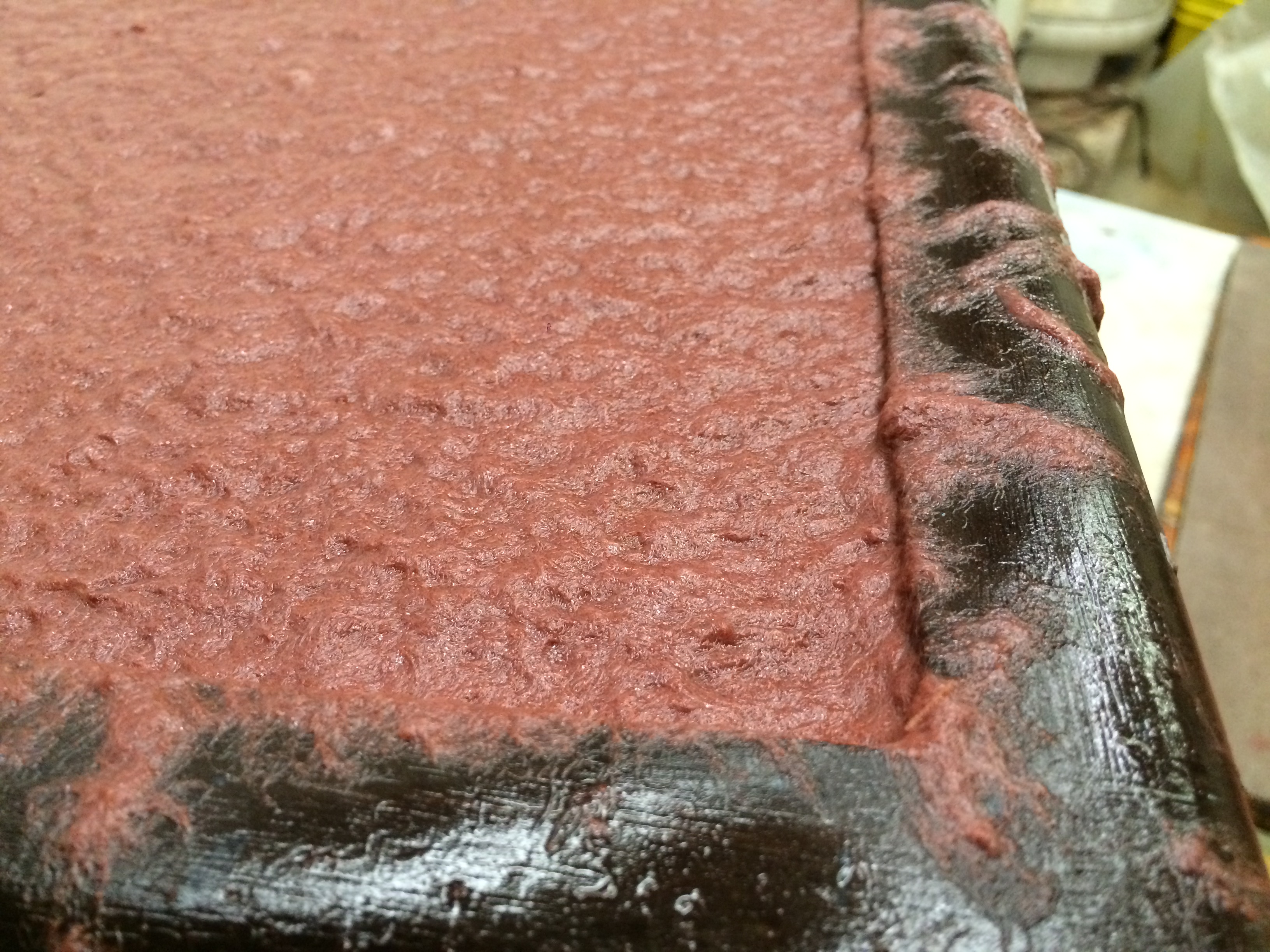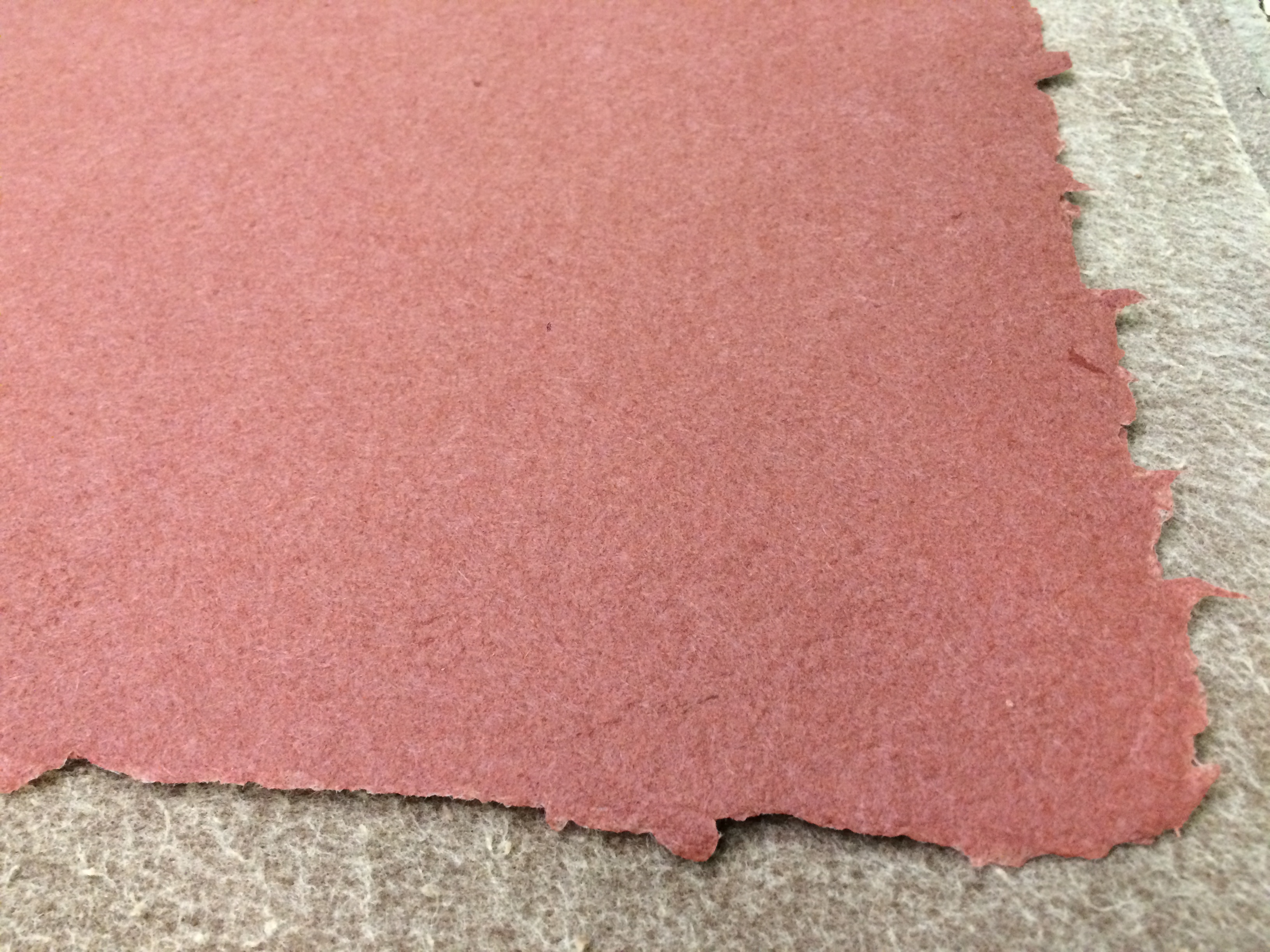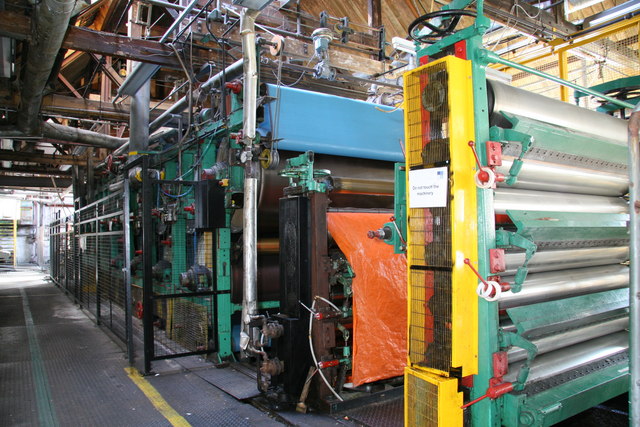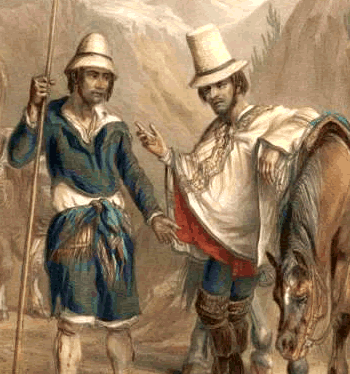|
Deckle Edge
Paper with a feathered edge is described as having a deckle edge, in contrast to a cut edge. Before the 19th century, the deckle edge was unavoidable, a natural artifact of the papermaking process in which sheets of paper were made individually on a deckle, a wooden frame. Today, machine-made paper may artificially have its edges produced with deckle edges. The deckle could not make a perfect seal against the screen at the edges and the paper slurry would seep under, creating a rough edge to the paper. The deckle edge could be trimmed off, but this extra step added to the cost of the book. Beginning in the early 1800s with the invention of the Fourdrinier machine, paper was produced in long rolls and the deckle became mostly obsolete. Although there was some rough edging on the ends of the rolls, it was cut off, and the individual sheets cut out from the roll would have no deckle edge in any case. History With the appearance of smooth edges in the 19th century, the deckle edge ... [...More Info...] [...Related Items...] OR: [Wikipedia] [Google] [Baidu] |
Deckle Edge Book (Chaucer)
A deckle is a removable wooden frame or "fence" used in manual paper-making. It can also mean deckle edge paper, which is a type of industrially produced paper with rough cut, distressed edges used in the book trade. Deckle frame In manual paper-making, a ''deckle'' is a removable wooden frame or "fence" placed into a mould to keep the paper pulp slurry within the bounds of the wire facing on a mould, and to control the size of the sheet produced. The mould and deckle is dipped into a vat of water and paper pulp that has been beat (fibrillated). The pulp is quickly scooped out of the vat and the mould and deckle is shaken as excess water is drained off. The deckle is then removed and the newly formed sheet is "couched" (set) onto felts. Fiber that has been beat longer generally requires more time to drain. If the paper slurry gets under, or if long fibers settles on top of the deckle, it will cause a more irregular edge. Deckle edge Paper with a feathered edge is described ... [...More Info...] [...Related Items...] OR: [Wikipedia] [Google] [Baidu] |
Papermaking
Papermaking is the manufacture of paper and cardboard, which are used widely for printing, writing, and packaging, among many other purposes. Today almost all paper is made using industrial machinery, while handmade paper survives as a specialized craft and a medium for artistic expression. In papermaking, a dilute suspension consisting mostly of separate cellulose fibres in water is drained through a sieve-like screen, so that a mat of randomly interwoven fibres is laid down. Water is further removed from this sheet by pressing, sometimes aided by suction or vacuum, or heating. Once dry, a generally flat, uniform and strong sheet of paper is achieved. Before the invention and current widespread adoption of automated machinery, all paper was made by hand, formed or laid one sheet at a time by specialized laborers. Even today those who make paper by hand use tools and technologies quite similar to those existing hundreds of years ago, as originally developed in China and other ... [...More Info...] [...Related Items...] OR: [Wikipedia] [Google] [Baidu] |
Deckle
A deckle is a removable wooden frame or "fence" used in manual paper-making. It can also mean deckle edge paper, which is a type of industrially produced paper with rough cut, distressed edges used in the book trade. Deckle frame In manual paper-making, a ''deckle'' is a removable wooden frame or "fence" placed into a mould to keep the paper pulp slurry within the bounds of the wire facing on a mould, and to control the size of the sheet produced. The mould and deckle is dipped into a vat of water and paper pulp that has been beat (fibrillated). The pulp is quickly scooped out of the vat and the mould and deckle is shaken as excess water is drained off. The deckle is then removed and the newly formed sheet is "couched" (set) onto felts. Fiber that has been beat longer generally requires more time to drain. If the paper slurry gets under, or if long fibers settles on top of the deckle, it will cause a more irregular edge. Deckle edge Paper with a feathered edge is described ... [...More Info...] [...Related Items...] OR: [Wikipedia] [Google] [Baidu] |
The Economist
''The Economist'' is a British weekly newspaper printed in demitab format and published digitally. It focuses on current affairs, international business, politics, technology, and culture. Based in London, the newspaper is owned by The Economist Group, with its core editorial offices in the United States, as well as across major cities in continental Europe, Asia, and the Middle East. In 2019, its average global print circulation was over 909,476; this, combined with its digital presence, runs to over 1.6 million. Across its social media platforms, it reaches an audience of 35 million, as of 2016. The newspaper has a prominent focus on data journalism and interpretive analysis over original reporting, to both criticism and acclaim. Founded in 1843, ''The Economist'' was first circulated by Scottish economist James Wilson to muster support for abolishing the British Corn Laws (1815–1846), a system of import tariffs. Over time, the newspaper's coverage expanded further into ... [...More Info...] [...Related Items...] OR: [Wikipedia] [Google] [Baidu] |
Fourdrinier Machine
A paper machine (or paper-making machine) is an industrial machine which is used in the pulp and paper industry to create paper in large quantities at high speed. Modern paper-making machines are based on the principles of the Fourdrinier Machine, which uses a moving woven mesh to create a continuous paper web by filtering out the fibres held in a paper stock and producing a continuously moving wet mat of fibre. This is dried in the machine to produce a strong paper web. The basic process is an industrialised version of the historical process of hand paper-making, which could not satisfy the demands of developing modern society for large quantities of a printing and writing substrate. The first modern paper machine was invented by Louis-Nicolas Robert in France in 1799, and an improved version patented in Britain by Henry and Sealy Fourdrinier in 1806. The same process is used to produce paperboard on a paperboard machine. Process sections Paper machines usually have at leas ... [...More Info...] [...Related Items...] OR: [Wikipedia] [Google] [Baidu] |
Status Symbol
A status symbol is a visible, external symbol of one's social position, an indicator of economic or social status. Many luxury goods are often considered status symbols. ''Status symbol'' is also a sociological term – as part of social and sociological symbolic interactionism – relating to how individuals and groups interact and interpret various cultural symbols. By region and time As people aspire to high status, they often seek also its symbols. As with other symbols, status symbols may change in value or meaning over time, and will differ among countries and cultural regions, based on their economy and technology. For example, before the invention of the printing press, possession of a large collection of laboriously hand-copied books was a symbol of wealth and scholarship. In later centuries, books (and literacy) became more common, so a private library A private library is a library that is privately owned. Private libraries are usually intended for the use ... [...More Info...] [...Related Items...] OR: [Wikipedia] [Google] [Baidu] |
Amazon (company)
Amazon.com, Inc. ( ) is an American multinational technology company focusing on e-commerce, cloud computing, online advertising, digital streaming, and artificial intelligence. It has been referred to as "one of the most influential economic and cultural forces in the world", and is one of the world's most valuable brands. It is one of the Big Five American information technology companies, alongside Alphabet, Apple, Meta, and Microsoft. Amazon was founded by Jeff Bezos from his garage in Bellevue, Washington, on July 5, 1994. Initially an online marketplace for books, it has expanded into a multitude of product categories, a strategy that has earned it the moniker ''The Everything Store''. It has multiple subsidiaries including Amazon Web Services (cloud computing), Zoox (autonomous vehicles), Kuiper Systems (satellite Internet), and Amazon Lab126 (computer hardware R&D). Its other subsidiaries include Ring, Twitch, IMDb, and Whole Foods Market. Its acquisition of Who ... [...More Info...] [...Related Items...] OR: [Wikipedia] [Google] [Baidu] |

.jpg)




